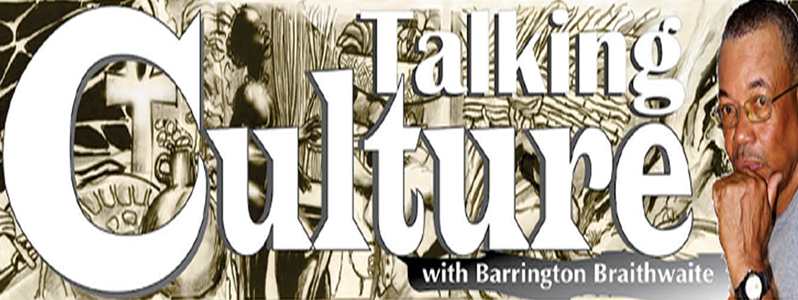If you do, it will prevent ‘eye-pass’
MOST of the racist based political bottom house and rum shop nastiness that is peddled in falsified definitions about concluded political groups that belong to other variations of our Guyanese humanity is allowed because of a tremendous information vacuum in our consciousness and though it has been covered in selected literature, there has been no organised effort to saturate the national consciousness with an irrefutable portrayal of truly how we got here and the milestones covered in the necessary context. We must begin from 1834 to 1966 because it is more relevant to the current state of Guyana. The suggested period was one of constant change, thus it will have to be covered in episodes, and the following statement is how it should be captured. To present in an abridged context it has to begin like this: By the year 1834 the colonies of Berbice, Essequibo and Demerara were intact, with the relative capitals New Amsterdam, Georgetown and Bartica Grove already in place. Henry Bolingbroke, A Voyage to Demerara 1799-1806 wrote of then Stabroek “The principle Streets are quite straight, with carriage roads. The middle street leading from the King’s Stelling is paved with bricks and has lamps on each side; another public stelling or wharf (besides several that are private) is kept purposely in order for landing and shipping of goods. The population in Stabroek consists of about fifteen hundred whites, two thousand free people of colour, and five thousand Negroes. “ Cummingsburg, Bridgetown, New Town, Labourgade, Werk-en-Rust were then in place. There were many Afro citizens that were also free persons. The enslaved Africans journeyed to the Sunday slave market from the coastal plantations and sold their produce. They also sold much-needed citrus and fresh eggs and produce to the ships of port Stabroek. There were always free Afro women of all shades who imported the best dresses, trousers etc from England. This was a side trade encouraged by the ship’s captains, but the slaves did purchase but also saved most of their coins. Emancipation was lobbied for by English abolitionists. This was coupled by trade factors that affected the local plantations; most of the legitimate owners were not resident in the colony. Emilia da Costa, Crowns of Glory, Tears of Blood writes “The planters were caught in a terrible contradiction. The same historical process that in England was leading to abolitionism and free trade had opened new opportunities for investment in Great Britain and was also turning investors toward the East Indies and other parts of the world, making them increasingly indifferent to the fate of the colony. Meanwhile, the Demerara planters, while struggling to increase their trade with other countries, could only try to defend their privileges in the British market and hold onto slavery.”
This was around 1812-15, could their table mourning’s have been transferred to the contemplations of enslaved Africans, inspiring them to save their earnings, in expectation? It must be also realised that the English had abolished the slave trade, were moving into the Industrial age of mass merchandising([by 1805-onwards) and were more interested in subjects who had purchasing power rather than enslaved.

After Emancipation ‘The genesis of modern Guyana’ this was the most inspiring and vicious period of social conflict. Milestones in Village History- A series of six radio talks by Allan Young editor David A Granger: “The great village movement of 1839-1848, a marvellous decade in this country’s history when emancipated Africans started to migrate from the sugar plantations, on which they had been enslaved, to establish free villages. By 1842, 16,000 Africans were living in such villages; by 1848, there were 44,000; and by 1856 the village population already represented nearly half of the population of the entire coastland. In that decade, Africans had expended more than a million dollars to purchase land and a similar amount to build over 10,000 houses. By the end of 1848, a chain of villages and settlements had been established from the Corentyne to the Pomeroon Rivers.” The new villages became the subjects of taxation, and the Government was controlled by the merchants and the planters, who designed the tax system, their objective was to remove all possibility of the emancipated Africans from becoming independent and as proprietors. Colonies are inhabited by fossilisation against change and are vicious to the ‘metamorphosis of evil’ to preserve the status quo. The villages paid their taxes but expectations from the colony were not kept. “In 1846 the Sugar Duties Act was reintroduced and passed. This act signalled the imminent termination of the preferential treatment on the British market to which the planting community had become dependent. Earl Grey, a staunch advocate of free trade, reasoned that it was time to free British industry and commerce from impediments which had been constructed mistakenly for their benefit.” James G. Rose-Themes in African Guyanese History, [a pity our local politicians did not learn from our history]. But their monies went to assist with the importation of indentured workers, thus, the villagers responded to their cut wages with riots and burning. Neglect of Colony obligations to drainage works led to the flooding of the villages, crops perished, the challenge to their freedom had begun.
“But there was more to come. There was a serious financial crisis in 1847 from which the interests of sugar suffered heavily. The bankruptcy of more than a dozen West Indian houses of long standing had concentric effects throughout British Guiana. Subsequently, even the Banks which maintained some semblance of solvency refused to make loans available to the estates. When Hamilton House of Dublin fell, no fewer than 12 estates folded with it. The West Indian body in Britain issued strict instructions prohibiting the usual drawing rights of planters”…“on Water Street followed, and before long, the African labour force began refusing banknotes as payment. Those who had paper money, at home or in the Banks, hastened to the Banks to convert to specie. Shrewd Portuguese businessmen encouraged the panic among the African population and were able to buy bank notes at as much as 20 percent below par. The gloom was shared by governor Light who, in his final despatch for 1847, declared that ”As affairs now stand, one-half of the sugar estates will not be able to carry on the cultivation” James G Rose Themes of African Guyanese History. The colonials by 1883 implemented every racist and structural scheme to overthrow village self-governance. Many eventually migrated to the towns, but then indentured workers from India, Portugal, China, Africa and the Caribbean were in the colony.
The Portuguese came to the colony of British Guiana from difficult conditions in Madeira, and having neither the culture, the physical strength, nor the resistance to tropical diseases they died quickly on the estates, they then gravitated to the very limited retail business that the post-emancipation African had acquired a grudgingly access to, providing to his Township and coastal brethren. The colony authority saw in the Portuguese an eager and willing pawn though unaware of the hidden contentions; the Portuguese had become the perfect buffer for the schemes of the colonial elite. The colony authority had sinisterly authorised the implementation of taxation to limit the growth and independence of the post-emancipation African. To conclude next week.




.png)









